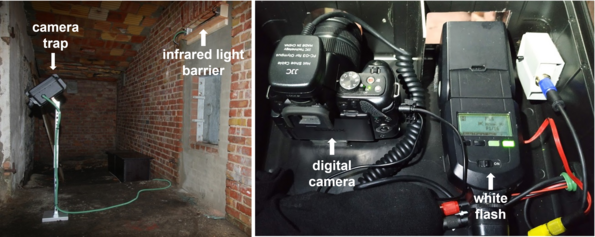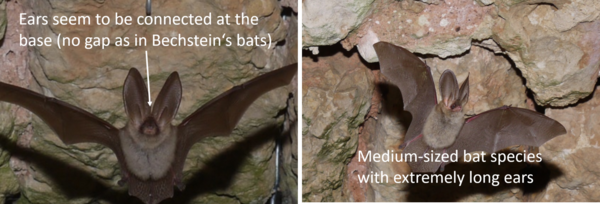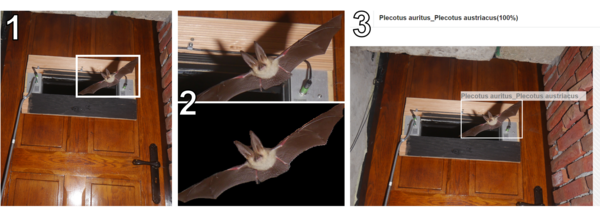Infrared light barriers and camera trap for bat monitoring
Data collection
Infrared light barriers are monitoring devices (manufactured by ChiroTEC), which can be installed at the entrance of bat roosts and hibernacula, and count the number of bats flying in or out with the help of 2 curtains of infrared breams. This method allows for continuous remote monitoring of roosts throughout the year, and an accurate count of the hibernating bat population.
One or two camera traps can be connected to the light barrier so that they are triggered when the light barrier detects a bat pass (standard setup 1 camera - registering only entries). The resulting camera trap data can be used to characterize the species diversity and phenology of the species present.
For more information on the full methodology, see Krivek et al. 2023: doi.org/10.1111/acv.12856
Manual image analysis
Within the framework of various research projects of the Applied Zoology and Nature Conservation Group at the University of Greifswald, we have set up such automated bat monitoring systems at several bat hibernacula.
From the resulting images, we can identify bats to species level, however this is a time consuming and challenging task. First you need to learn the characteristics of each bat species and then you need to manually identify bats in tens of thousands of images.
Now you can also test your identification skills! With the help of our identification key, you can learn how to distinguish the species from the images and you can test your knowledge on a diverse set of camera trap images collected at hibernacula all around Germany.
To get you started, we have provided a training course with 10 bat photos, which you must complete before you can really get started! You can try the demo version here or start the training here (you need to be registered and logged in) to get to the photo ID challenge.
Automated image analysis
Manual image identification is very time consuming and requires a lot of experience and patience. However, now we can also use a deep learning-based solution, BatNet, to automatically identify bats from camera trap images (Krivek et al., 2023: https://doi.org/10.1002/rse2.339).
BatNet locates all bats on an image, removes the background around them, and provides a species identification with a confidence level (0-100%) indicating how confident the identification is. BatNet consists of a detector and classifier and these can be retrained for new locations or new species when needed.
Download BatNet for free from https://github.com/GabiK-bat/BatNet.


